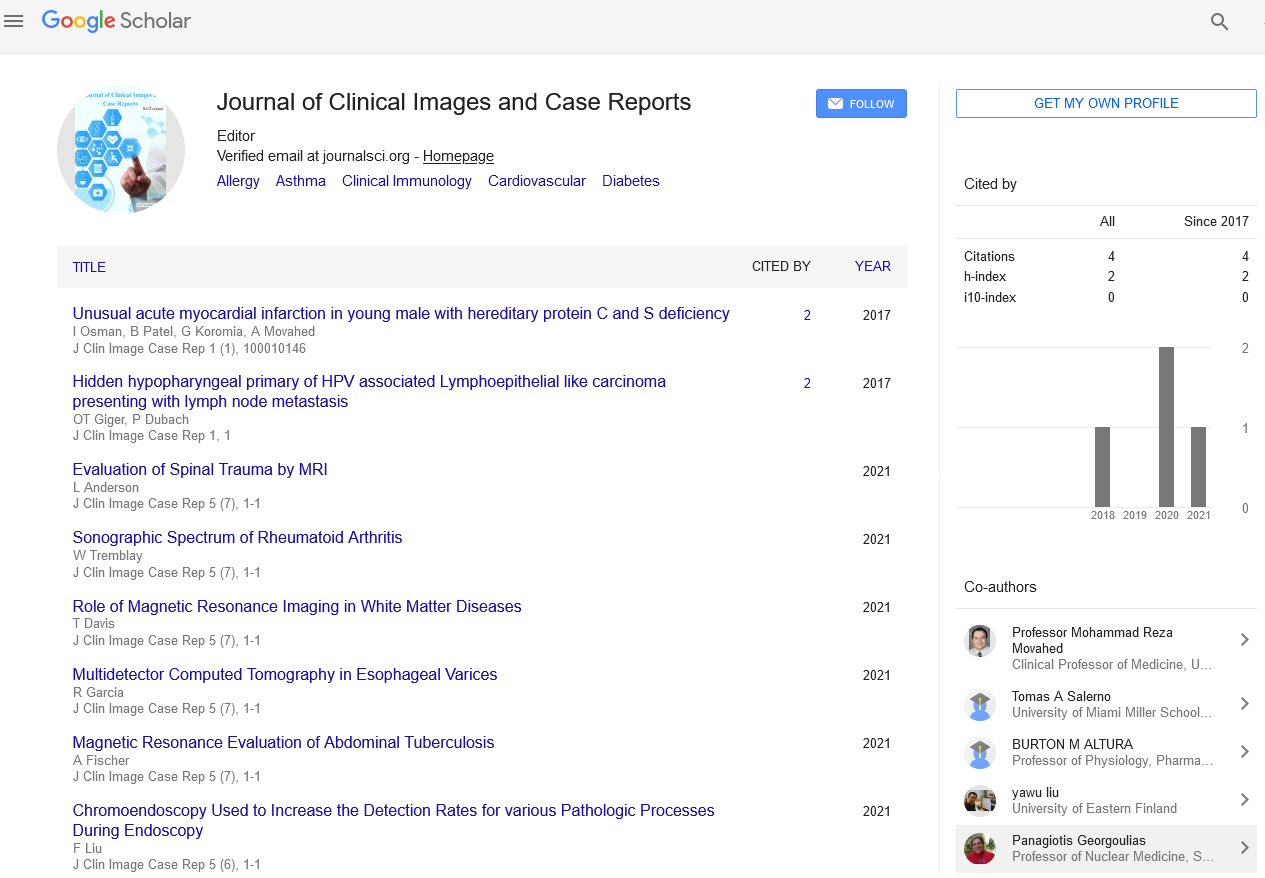Perspective, J Clin Image Case Rep Vol: 8 Issue: 6
Integrating Psychological Therapy into Psychosomatic Disorder Treatment
Tripp Baxter*
1Department of Psychology, University of Geneva, Geneva, Switzerland
*Corresponding Author: Tripp Baxter,
Department of Psychology, University of
Geneva, Geneva, Switzerland
E-mail: baxtertripp@gmail.com
Received date: 26 November, 2024, Manuscript No. CICR-24-156412;
Editor assigned date: 28 November, 2024, PreQC No. CICR-24-156412 (PQ);
Reviewed date: 12 December, 2024, QC No. CICR-24-156412;
Revised date: 19 December, 2024, Manuscript No. CICR-24-156412 (R);
Published date: 26 December, 2024, DOI: 10.4172/CICR.1000333.
Citation: Baxter T (2024) Integrating Psychological Therapy into Psychosomatic Disorder Treatment. J Clin Image Case Rep 8:6.
Description
Psychosomatic disorders are conditions in which psychological stress or emotional factors contribute to physical symptoms, causing significant distress and disability. These disorders are complex, involving association between the mind and body and often result in patients experiencing chronic pain, gastrointestinal issues, headaches and other physical symptoms that have no clear medical explanation. Despite the absence of a definitive physical cause, the symptoms experienced by individuals are very real and can significantly impact their quality of life. While traditional treatments have primarily focused on addressing physical symptoms, there is a growing recognition of the importance of psychological therapy in managing psychosomatic disorders. This shift reflects a deeper understanding of the complex relationship between emotional well-being and physical health.
Psychological therapy offers valuable tools for both understanding and addressing the root causes of psychosomatic disorders. Cognitive- Behavioral Therapy (CBT), for example, is a widely used approach that helps patients identify and change the thought patterns and behaviors that contribute to emotional distress. By addressing these psychological factors, CBT can indirectly reduce physical symptoms. Patients are taught coping strategies, relaxation techniques and stress management skills that enable them to manage the psychological stressors exacerbating their somatic symptoms. CBT is particularly effective because it empowers patients to take an active role in their treatment, providing them with practical tools to navigate the challenges posed by their condition.
Another effective approach is psychodynamic therapy, which analyzes into unconscious conflicts and past experiences that may contribute to emotional distress manifesting as physical symptoms. This therapy focuses on uncovering the underlying psychological factors that influence an individual’s health, offering insight into how past trauma or unresolved emotional conflicts may shape present-day health issues. Through increased self-awareness, patients can better understand the connection between their emotional experiences and physical symptoms, fostering a sense of clarity and emotional resolution. This deeper understanding often results in a significant reduction in symptom severity and frequency.
Integrating these therapies into treatment plans for psychosomatic disorders can enhance the effectiveness of traditional medical interventions. Patients who receive psychological support are often better equipped to cope with the emotional stress that underlies their symptoms. Furthermore, psychological therapy can improve adherence to medical treatment, as patients develop healthier ways of managing anxiety, stress and emotional triggers that might otherwise worsen their condition.
Moreover, adopting a integrated approach to treatment fosters a comprehensive understanding of the patient's overall well-being. Addressing both psychological and physical aspects of the disorder encourages collaboration among healthcare providers, including psychologists, physicians and specialists. This multidisciplinary approach ensures that patients receive well-rounded care that targets both the mind and body, ultimately leading to better outcomes and a reduction in the chronicity of symptoms over time. This model of care not only addresses the immediate needs of patients but also lays the groundwork for sustained improvements in their overall health and quality of life.
Incorporating psychological therapy into the treatment of psychosomatic disorders also promotes patient empowerment. As patients learn to understand and manage their stress and emotions, they gain a sense of control over their health. This empowerment reduces feelings of helplessness and fosters a proactive attitude toward treatment. By actively participating in their care, patients are more likely to experience improved mental and physical well-being. This holistic improvement is essential for enhancing their overall quality of life and reducing the burden of chronic symptoms.
 Spanish
Spanish  Chinese
Chinese  Russian
Russian  German
German  French
French  Japanese
Japanese  Portuguese
Portuguese  Hindi
Hindi 